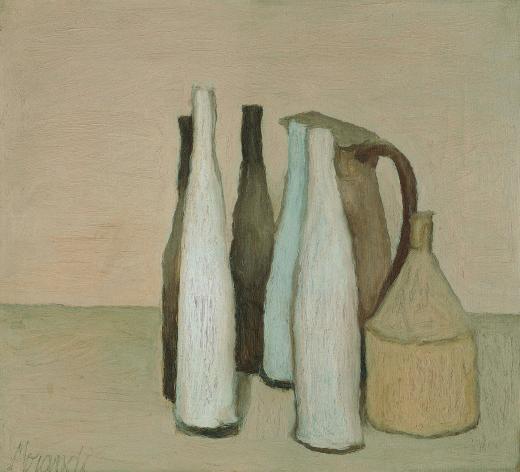MORANDI: A NEW INCAMMINATO
When the art historian Roberto Longhi began teaching at the University of Bologna in 1934, he designed a general course on the history of the Bologna school from the Middle Ages to the present day. The following year, he published that history with the title Momenti della pittura Bolognese. Longhi maintained that the dominant characteristic of Bolognese painting was the immediacy and expressiveness of its interpretation of naturalism. According to his history, the heroes of Bolognese art were the three Carracci brothers, Agostino, Annibale, and Ludovico. The Carracci—Baroque painters active toward the end of the sixteenth and the beginning of the seventeenth centuries—were the leaders of a modern pictorial style constructed on the basis of established artistic traditions. It is significant that he should have concluded his analysis with Giorgio Morandi, describing his work as that of a new incamminato, or one who is advancing along a path. Longhi stressed the fact that Morandi explored the past to find his path through the “most troublesome droughts” of modern painting.
Morandi never explicitly praised the art of his native city. Nevertheless, he did pay close attention to his Baroque precursors and other later influences. The Bolognese Seicento focused on daily life and represented its most humble aspects, and it was fundamental to the development of genre painting in Italy between the sixteenth and eighteenth centuries. While Morandi’s work should arguably not be classified as genre painting, since he eliminated picturesque elements from his images in a quest for a deeper understanding of the objects themselves, the artist seems to have responded to this Italian tradition in his representation of everyday scenes. This speaks to the important role artists from Bologna as well as Northern Italy played in Morandi’s painting. Shown in this room are a selection of such artworks from his personal collection.


